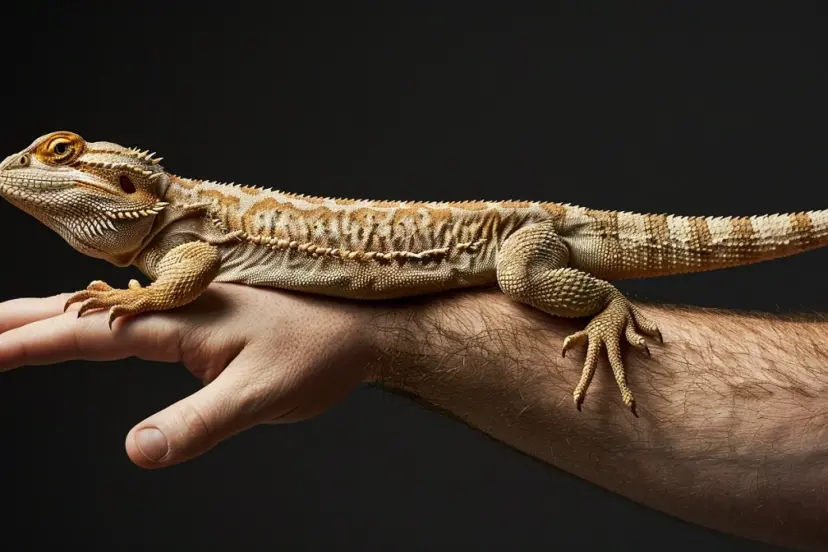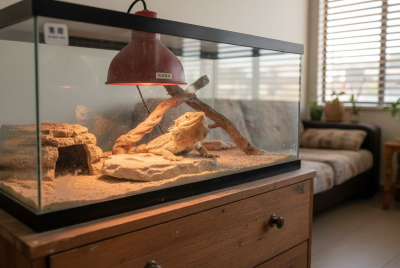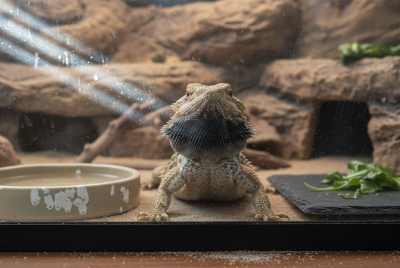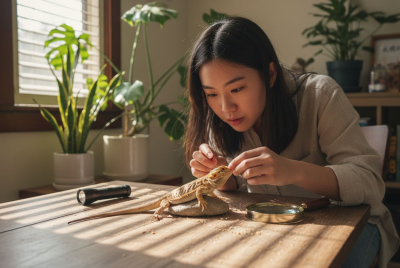Bearded Dragon German Giant: The Ultimate Guide
When I first discovered German Giant bearded dragons, I was amazed by their size and charm. These impressive reptiles are larger than your average bearded dragon, making them an appealing choice for experienced reptile owners who want something a little more unique. Whether you’re a seasoned dragon owner or just starting out, the German Giant is a breed worth considering. In this guide, I’ll walk you through everything you need to know to care for these magnificent creatures.
What is a German Giant Bearded Dragon?
German Giant bearded dragons are a special morph of the common bearded dragon (Pogona vitticeps). They are selectively bred to be much larger than typical bearded dragons, with some individuals reaching lengths of up to 26 inches or more. Let’s explore more about what makes these dragons so unique.
Origins and History of the German Giant Bearded Dragon
The German Giant bearded dragon morph was first bred in Germany, hence the name. Breeders focused on selecting the largest specimens to develop this oversized variety. Over the years, these dragons have become popular in the pet trade due to their impressive size and robust health.
How the German Giant Differs from Other Bearded Dragons
Aside from their size, German Giants have a few other key differences compared to regular bearded dragons. They tend to have a more pronounced head and body structure, and their temperaments can also differ slightly. While they are just as docile and friendly as other dragons, some owners report that German Giants may be a bit more active or inquisitive.
Physical Characteristics of the German Giant
Size and Growth Patterns
As the name suggests, German Giants are much larger than your average bearded dragon. While a typical bearded dragon grows to about 18–22 inches, German Giants can reach 24–26 inches or even longer. Their larger size means they need more space and slightly different care compared to standard bearded dragons.
Color Variations
German Giants come in a range of colors, just like regular bearded dragons. You can find them in various shades of brown, yellow, orange, and red. Some breeders even focus on creating unique color patterns, making German Giants a stunning addition to any collection.
Unique Features of the German Giant
In addition to their size, German Giants often have a more rugged, “tougher” look. Their heads tend to be broader, and their bodies more robust, giving them a formidable appearance even though they are just as gentle as smaller bearded dragons.
German Giant Bearded Dragon Temperament
Behavior Traits
German Giants are known for their docile and friendly nature. Just like regular bearded dragons, they enjoy basking in the sun, exploring their environment, and being handled by their owners. They are calm creatures but can be more active at times due to their larger size.
Socialization and Bonding
One of the best parts of owning a German Giant is how well they bond with their owners. With regular handling and interaction, these dragons can become very tame and even recognize their caregivers. Make sure to handle them gently and consistently to foster a strong bond.
Diet and Nutrition Requirements
Types of Food to Feed a German Giant Bearded Dragon
Like all bearded dragons, German Giants are omnivores, meaning they eat both plants and insects. Their diet should consist of a mix of leafy greens, vegetables, and protein sources like crickets, mealworms, and roaches. Ensure that their food is appropriately sized so they can eat comfortably.
Importance of Calcium and Vitamins
Calcium is crucial for German Giants, especially given their larger bone structure. Without enough calcium, they can develop metabolic bone disease, which can be life-threatening. Dust their insects with calcium powder a few times a week and provide vitamin supplements as needed.
How Often Should You Feed a German Giant?
You should feed your German Giant daily when they are young, and as they mature, you can reduce feeding to every other day for insects and provide fresh greens daily. Keep an eye on their weight and overall health to adjust their diet accordingly.
Housing and Enclosure Setup for German Giants
Ideal Enclosure Size
Because German Giants are larger than typical bearded dragons, they need more space. A minimum of a 120-gallon tank is recommended, but bigger is always better. Provide plenty of room for them to move around and explore.
Lighting and Heating Requirements
Just like any bearded dragon, German Giants need proper UVB lighting and a heat source to thrive. Their basking spot should be around 100–110°F, and the cool side of the enclosure should be in the 80s. Ensure they have a day and night cycle to mimic their natural environment.
Substrate Recommendations
When it comes to substrates, avoid loose substrates like sand, as these can cause impaction. Instead, opt for reptile carpet, tiles, or paper towels for easy cleaning and safety.
Health and Lifespan of German Giant Bearded Dragons
Common Health Issues
German Giants are generally healthy, but they are prone to the same issues as other bearded dragons, such as metabolic bone disease, respiratory infections, and parasites. Regular vet checkups and proper care can help prevent most health problems.
Signs of a Healthy Dragon
A healthy German Giant will have bright eyes, a strong appetite, and a smooth, even shed. Their stools should be well-formed, and they should be active and alert. If you notice any changes in behavior or appearance, consult a vet promptly.
Breeding German Giant Bearded Dragons
Breeding Process
If you’re considering breeding German Giants, make sure you have a good understanding of their genetics and care needs. Mating typically happens in the spring, and the female will lay eggs within 4–6 weeks. The eggs will then need to be incubated until they hatch.
Tips for Successful Breeding
To increase the chances of successful breeding, make sure both the male and female are healthy and of appropriate size. Provide plenty of food and calcium for the female before and after laying eggs to keep her strong.
Conclusion
German Giant bearded dragons are a remarkable breed that offers something a little extra for reptile enthusiasts. With their larger size, docile nature, and unique appearance, they make an excellent pet for those who are prepared to meet their needs. Whether you’re looking to add one to your collection or are simply fascinated by these magnificent creatures, German Giants are sure to captivate your heart.
FAQs
- How big do German Giant bearded dragons get?
German Giants can grow up to 24–26 inches or even larger, making them one of the biggest bearded dragon morphs. - Are German Giants harder to care for than regular bearded dragons?
Not necessarily, but they do require a larger enclosure and more food due to their size. - How long do German Giant bearded dragons live?
Several factors can affect the lifespan of your German Giant bearded dragon, but on average, they live 5–8 years. This is slightly shorter than smaller morphs, which typically live 10 to 12 years. - What do I need to know before breeding German Giants?
Make sure both dragons are healthy, and be prepared for the responsibility of incubating and caring for the hatchlings. - Can German Giant bearded dragons be housed together?
It’s generally not recommended to house bearded dragons together, especially larger ones like German Giants, as they can become territorial.




